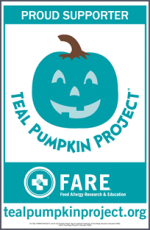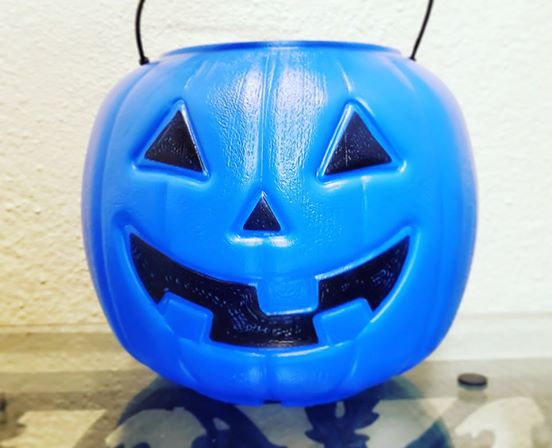Halloween is a fun time for children to dress up like their favorite characters and collect candy with their friends. However, it can be difficult for children with allergies or special needs. This year as you're answering the door to hand out goodies, keep these things in mind:
 Teal Pumpkins: Food Allergies - these kids often have allergies to nuts or other common ingredients in candy.
Teal Pumpkins: Food Allergies - these kids often have allergies to nuts or other common ingredients in candy.
The Teal Pumpkin Project has lots of great information on their website. Suggestions for non-food treats include glow bracelets, necklaces, stickers, pencils, bubbles, crayons, slinkies, whistles, finger puppets, bookmarks. All of these items can be purchased in bulk, just like Halloween candy, and they don’t expire so you can always save extras for next year. As a reminder, don’t choose non-food items such as clay, which could contain wheat allergens, or balloons due to latex allergies.If you choose to participate, you can also add your house to the Teal Pumpkin Project Map. Participating in the Teal Pumpkin Project doesn’t mean that you can’t give away candy on Halloween too! Simply keep your candy and non-candy items separate and let trick-or-treaters choose which they prefer when they arrive.
 Blue Pumpkins: "unofficial" indicator for Autism - these kids are often non-verbal and while they love Halloween, all of the people, costumes, decorations and flashing lights can cause sensory overload.
Blue Pumpkins: "unofficial" indicator for Autism - these kids are often non-verbal and while they love Halloween, all of the people, costumes, decorations and flashing lights can cause sensory overload.
Be sure to remember that these children may not say "Trick or Treat" for a number of reasons, so go ahead and give them candy without insisting they say it. Additionally, older children with autism (who look like adults) may choose to join in on the trick or treating as well.
You can find a sign to post to let parents know your home is Autism friendly here. More information can be found on the Autism Speaks website.


